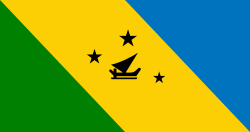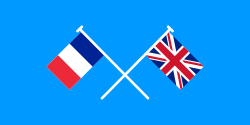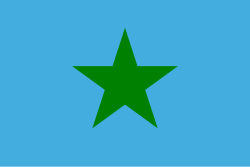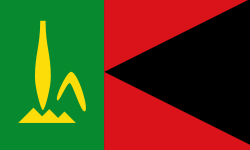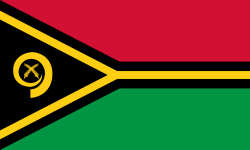 Flag of Vanuatu assuming an aspect ratio of 3:5 | |
| Flaeg blong Vanuatu | |
| Use | National flag, civil and state ensign |
|---|---|
| Proportion | 2:3, 3:5 or 19:36 |
| Adopted | 18 February 1980 |
| Design | A horizontal bicolor of red and green with a golden pall, fimbriated in black, with a black chevron filling the lefthand space (alternately, a golden fillet pall surmounting a black gusset) and two gold crossed namele cycad fronds encircled in a gold boar tusk centered on the chevron. |
| Designed by | Kalontas Mahlon |

The national flag of Vanuatu (flaeg blong Vanuatu) was adopted on 18 February 1980. [1]
Contents
- Symbolism
- Construction
- Other flags of Vanuatu
- Government flag
- Military flags
- Political flags
- Subnational flags from Vanuatu
- Provincial flags
- Secessionist group flags
- City flags
- Historical flags of the New Hebrides
- See also
- References
- Bibliography
In 1977 a flag of almost the same colours and symbolism as the future national flag was designed by local artist Kalontas Malon and adopted by the Vanua'aku Pati. When the party led the New Hebrides to independence as Vanuatu in 1980, the colours of the party flag (red, green, black and yellow) were chosen to be the basis for the national flag on Independence Day, 30 July 1980. A parliamentary committee chose the final design based on submissions from local artists. [1]






